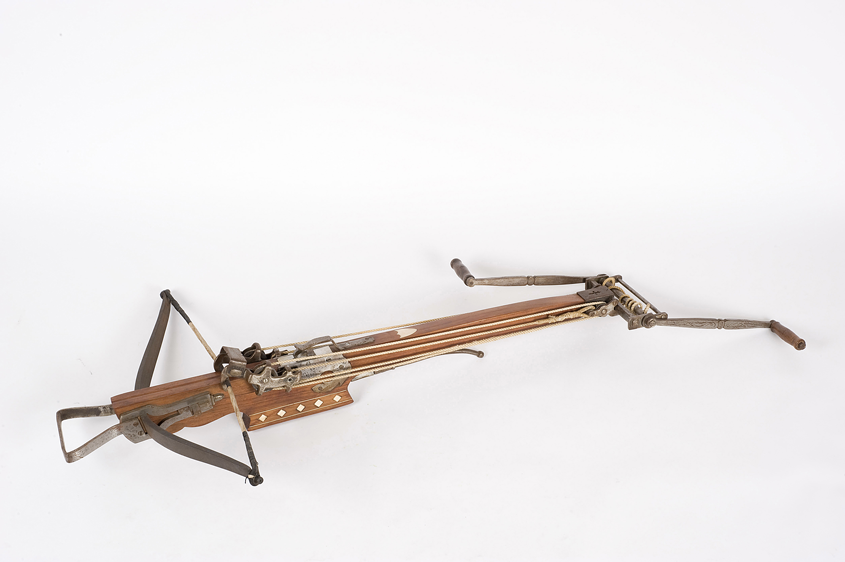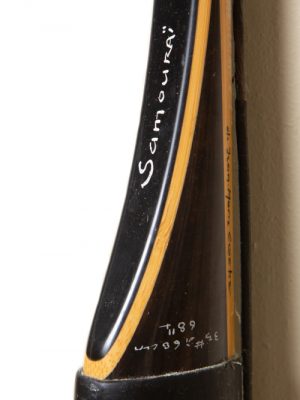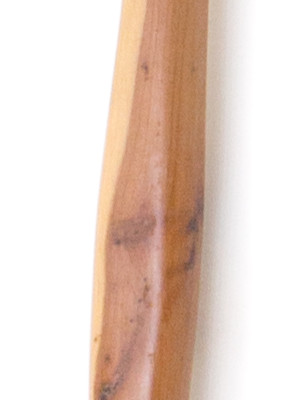Windlass crossbow
Reconstitution made by Robert Roth
France
Original model dated from the 15th century
20th century reproduction
Wood, rope and metal
Gift of Robert Roth, 1996
Inv. 1996.11.212
______________
From the 9th century onwards, the crossbow played an important military role in Europe, even though we know it was already used during the Roman era. During the Middle Ages, its reputation grew during battles led in the Middle East during the Crusades. Because of its formidable efficiency, it was nicknamed very early on “the devil’s weapon”. In 1139, during the Lateran Council, the Pope forbade its use among Christians, under penalty of excommunication.
The name of the windlass crossbow comes from the sort of cap in the shape of the tower at the top of the crossbow, while two hooks hold the bowstring. This system appears in paintings towards 1425. The crossbowman holds the crossbow to the ground by putting his foot in the stirrup, then actions two cranks that pull the string through pulley traction.
The windlass crossbow is considered to be one the most powerful crossbows. It was used for a long time to test armors. Thus, until the 16th century, armors that had resisted were deemed “foolproof”, whereas those that were damaged by the crossbow or the bow were considered “semi-proof”.
The quarrel
The quarrel is the projectile used with a crossbow, which has a square four-sided head. Shorter than the arrow (approximately 0,98 ft) and also heavier, it has a reduced feathering.
Bows and crossbows
Although both are ranged weapons, the bow and the crossbow present real differences: the first one is faster, the second one more powerful. Thus it is know that a good archer from the Middle Ages could shoot a dozen arrows during the time it took to arm a crossbow. Crossbowmen, on the other hand, could, thanks to the quarrel, go through a knight’s armor when an arrow could only brush against it.
Winding up the mechanism of a crossbow (like bending a bow) demands great physical strength. That is why, as crossbows became bigger and bigger, systems were invented in order to relieve the shooter and, thus gain in rapidity.















